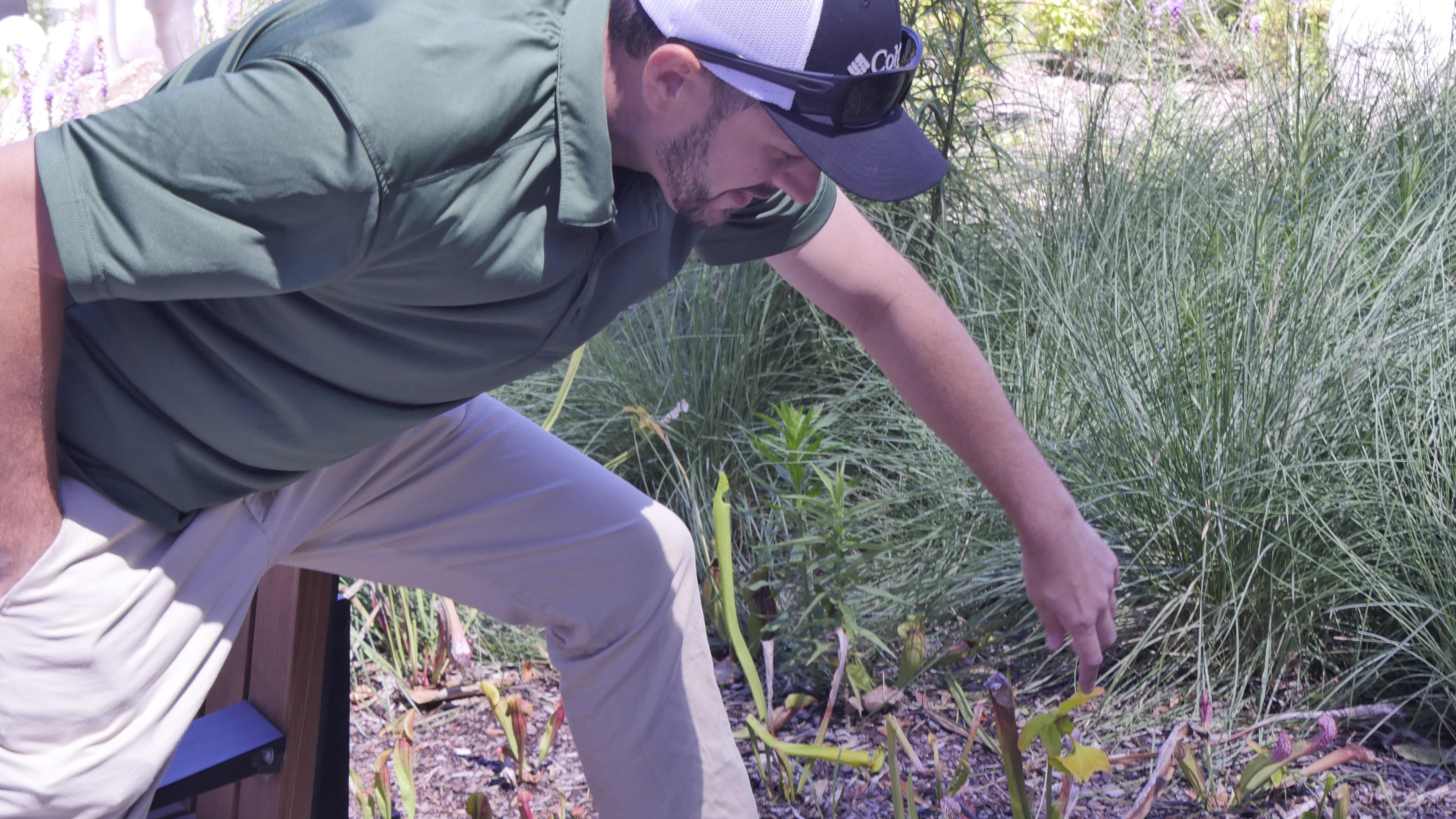It is a hot July day, and the new Amazon certified butterfly garden is full of the birds and the bees but not a butterfly in sight. But Dillon Clark, Amazon’s lead horticulturist explains he saw a monarch just last week and that the butterfly migration generally starts a little later in July, and they like swamp milkweed. “We have plenty of that here.”
Clark’s job is to maintain the 2.5 acres of external landscape in Met Park surrounding the new Amazon building (known as HQ2) as well as the 19 landscape terraces located in the building and several special displays. And now there is the newly installed certified butterfly garden rimming the daycare play area next to the building. The inspiration for the design of the original landscape of Met Park was based on a trip to the Smithsonian’s Botanical Garden.
The idea for the butterfly garden originated about five months ago when Tricia Wine, an Amazon staffer and the horticulture staff discovered that the North American Butterfly Association certifies butterfly gardens and that HQ2 already had a number of the native plants that could attract butterflies. Early in June volunteers and staff planted the butterfly garden including swamp and butterfly milkweed, coreopsis, asters, phlox and penstemon digitalis. Amazon planned a grand opening of the butterfly garden for June 20. Although the community event was postponed until fall due to the heat, the butterfly garden opened on schedule and is available to the public.
We begin the tour of the Mets Park area as Clark points to the tropical pitcher plants, which look a bit like a mushroom on a stem and is one of his favorites. He explains there are three different types of this carnivorous plant which digests insects. We walk past the large glass mushroom sculptures. “These light up at night.”
Clark explains the Amazon garden concentrates on native plants which they buy from family-owned local nurseries. Clark grew up in the area and remembers as a kid catching butterflies. “I’d come inside with my hands covered with butterfly dust from the wings.” He always thought he would end up working in Virginia somewhere but he had no idea he would become a horticulturist at Amazon.
The fence along the park area is rimmed with colorful metal butterflies. As we walk along the path through the garden, large swaths of coneflowers blend in with the black-eyed susan and the bee balm in the sunny spots. A bright yellow male goldfinch buzzes around the coneflowers and in a while is joined by a muted brownish female. If you bend over and listen carefully, you can hear the chirping of a grasshopper rubbing its hind legs against its wing casings in the middle of a bush nearby.
Clark says it is a challenge to keep native plants in a public setting alive and beautiful. “Weekly the weeds are pulled by hand. We don’t use any pesticides.” He explains Amazon is very environmentally conscious, and they have an irrigation system which is tailored to the needs of each plant. It uses the gray water leftover from the building and, “all trees are on an underground bubbler individually timed and controlled with my watch.”
He bends over. “See the leaf cutter bees and the tiny wasps. We have so many different kinds of bees if you pay attention.”
Clark explains that the garden was designed to reflect the local geographical area we live in. “This is the meadow area and this represents the fall line between the Piedmont and the Coastal Plains.” A mother and her small child sit at the edge of the garden in a shaded alcove.
Across the sidewalk we enter the community edible garden. Clark pulls back the heavy branches of a tall healthy tree. “See the persimmon tree is loaded with fruit.” The ripe fruit will soon fall off and cover the ground and be devoured by a variety of local critters. He points to the serviceberry tree that produces purple berries attractive to birds. “Over there are blueberries. Back in the corner is a hazelnut tree and over there is the sassafras bush which used to be used to make root beer.”
Clark arrived at Amazon a little over two years ago “at the tail end of construction.” He says he had bounced around to a number of different areas like residential and business “but they don’t focus heavily on horticulture like they do at Amazon.” Clark adds that he has one other horticulturist assisting him now at the Arlington headquarters. But he says the Seattle location has 22 horticulturists to support the greenhouse and rare tropical plants, the special displays and a live feed of the rare corpse plant which blooms only 2-3 days every couple of years. Its name derives from the odor of the plant which many compare to the smell of death.
He says all displays in Seattle are open to the public, and adds when they open the next expansive area in Arlington he is hoping to bring similar displays and events here as well.
“We love to have people come and enjoy the garden.” The current Amazon Met Park in Arlington including the butterfly garden is open to the public. Met Park is located on the grounds of the building located at 510 14th Street S.

